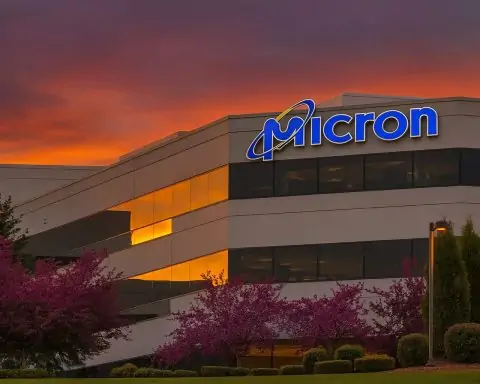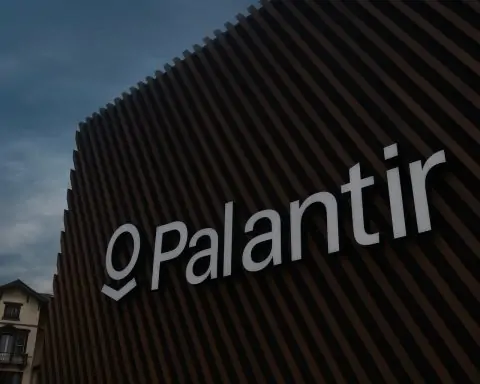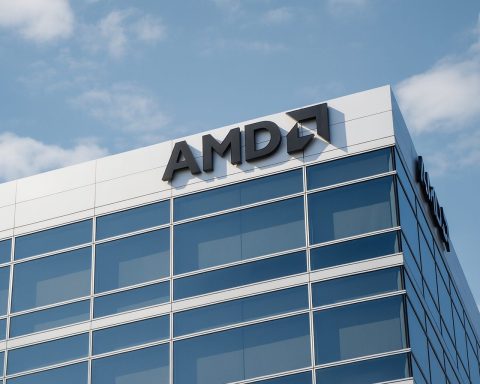- Spectacular 2025 Rally: MP Materials (NYSE: MP) shares have skyrocketed nearly 380% year-to-date, recently trading in the mid-$70s (up from about $15 in January) and even hitting record highs around $82 in August [1]. Trading volumes spiked well above average in late September (e.g. +42% vs. normal on Sept. 23), reflecting feverish investor interest [2].
- Unprecedented U.S. Government Backing: In a historic public-private partnership, the U.S. Department of Defense (DoD) invested $400 million for ~15% of MP Materials’ equity and extended a $150 million low-interest loan to upgrade its refinery [3]. The 10-year deal guarantees a price floor of $110/kg for MP’s neodymium-praseodymium (NdPr) oxide – nearly double current Chinese prices – and includes a 100% offtake agreement for MP’s future magnet output, ensuring a minimum $140 million/year EBITDA for MP [4]. This extraordinary support is aimed at jump-starting a domestic rare earth supply chain for national security [5].
- Major Apple Alliance: MP Materials inked a $500 million supply agreement with Apple in July, making Apple a key customer for MP’s new rare-earth magnet factory in Texas [6]. Apple prepaid $200 million to help fund the Fort Worth “Independence” plant and is partnering with MP to recycle rare earth materials at MP’s California mine, positioning MP as a crucial U.S. supplier for both the tech and defense sectors [7].
- Surging Output (But Losses Continue): MP’s production is ramping rapidly – in Q2 2025 its output of NdPr oxide jumped 119% year-on-year to 597 metric tons [8], fueling an 84% surge in quarterly revenue (to $57.4 million) [9]. However, heavy investment in refining and magnet manufacturing kept the bottom line in the red: Q2 saw a net -$0.13 per-share loss (MP’s 8th consecutive quarterly loss, though narrower than expected) [10]. Management projects continued volume growth – and with the DoD price floor and Apple’s guaranteed orders, MP aims to reach profitability in the next 1–2 years [11].
- High Valuation & Volatility: Even after a recent pullback, MP trades around the mid-$70s (~$13–14 billion market cap) [12]. Its valuation is steep – the forward price-to-sales ratio exceeds 25× (vs ~1.2× industry average) [13], and with no current profits, the stock’s rich pricing assumes significant growth ahead [14]. The stock is highly volatile (beta ~2.3), and analysts caution that any execution hiccup or policy shift could trigger big swings [15].
- Fresh Catalyst – China’s Export Curbs: On Oct. 9, Beijing announced new restrictions on rare-earth exportsas part of the U.S.–China trade standoff, a development that sent U.S. rare-earth stocks sharply higher. MP Materials’ shares jumped as much as 8.5% intraday on the news [16], while smaller peer USA Rare Earth spiked over 15% the same morning [17]. The rally underscores investor hopes that Western suppliers will benefit as China tightens its grip on these critical minerals.
- Experts See “Unprecedented” Deal: Analysts call the U.S. government’s support for MP Materials “a deal we haven’t seen before,” combining an equity stake with guaranteed offtake agreements for both ore and finished magnets – all to build a fully “homegrown” mine-to-magnet supply chain [18]. In this novel approach, the government shoulders much of the financial risk: “We need to accept that… some of that [money] is going to be lost forever, but you have to be willing to do that to diversify your supply chains,” says Columbia University’s Tom Moerenhout, noting the U.S. is prepared to invest big and not recoup everything in order to secure critical minerals [19].
- Strategic Importance & Tailwinds: Rare earth elements are essential for EV motors, wind turbines, smartphones, missiles, and more – but China dominates about 70% of global mine supply and 90% of processing capacity [20]. Beijing has shown willingness to weaponize this dominance (e.g. imposing export controls on magnet metals amid trade tensions) [21]. This backdrop greatly benefits MP Materials, currently the only significant North American source, as Western governments and manufacturers race to secure non-Chinese supply [22]. The Pentagon’s deal effectively insulates MP from price swings – its guaranteed $110/kg NdPr floor is well above prevailing market prices, ensuring healthy margins for years [23].
China’s Rare Earth Stranglehold Sparks U.S. Action
Rare earth elements – a group of 17 metals like neodymium, praseodymium, dysprosium, and terbium – may not be household names, but they are the lifeblood of modern tech and defense industries. They power the magnets in electric vehicle motors and wind turbines, enable the miniaturization of smartphones and precision-guided missiles, and are critical for fighter jet engines and satellites. For years, the United States has been almost entirely dependent on imports of these resources, especially from China [24]. In fact, China currently accounts for roughly 70% of the world’s rare earth ore production and over 90% of processing capacity – giving it a near chokehold on global supply [25].
This dominance has long been a geopolitical vulnerability for the U.S. and its allies. Policymakers have warned that China could cut off rare earth exports in a conflict or trade war, crippling industries and military readiness. Those fears edged closer to reality in 2025: in April, amid rising U.S.–China tensions, Beijing announced export restrictions on certain rare earth magnets used in EVs and defense systems [26]. (China later paused some curbs, but the message was clear – it’s willing to weaponize its resource leverage.) Then, on October 9, China unveiled even stricter export controls on key rare earth metals, sending shockwaves through markets. Virtually overnight, investors piled into non-Chinese rare earth companies, betting that supply chain security has become priority #1.
The market reaction was dramatic. MP Materials’ stock spiked about 8% intraday on the news of China’s new curbs [27], and USA Rare Earth – a smaller U.S. competitor – soared 15% that same morning [28]. Shares of other Western-aligned producers (from Australia’s Lynas to Canada’s Neo Performance Materials) also got a lift. “It’s a wake-up call,” one analyst noted, “that underscores just how valuable a domestic rare earth supply has become.” Governments in Washington, Brussels, and Tokyo are all scrambling to de-risk their supply chains from Beijing’s control. The result is an emerging rare earths race – and the U.S. just made its boldest move yet to catch up.
MP Materials: From Penny Stock to Pentagon Partner
At the center of America’s rare earth ambitions is MP Materials, the owner of the Mountain Pass mine in California’s Mojave Desert – the only major rare earth mine in the United States. Just a few years ago, MP Materials was a niche player, known mostly to mining geeks and SPAC investors. (The company went public via SPAC in 2020.) But in 2025, MP has transformed into something more akin to a strategic national asset – and its stock price has mirrored that meteoric rise.
At the start of 2025, MP’s stock languished around $15. Few could have predicted what was to come: by late August, shares had exploded to over $80 [29]. Even after some volatility, the stock is still hovering in the $70s as of this writing – making MP Materials the single best-performing stock in the entire Russell 1000 index for 2025 [30]. In percentage terms, MP is up roughly 350–380% year-to-date, an astonishing run fueled by a flurry of deals and government support. “It’s been a spectacular rally,” notes TechSpace’s Marcin Frąckiewicz, with trading volume surging as investors rush into this rare earth play [31] [32].
What turned MP Materials from a modest mining outfit into a Wall Street darling? In large part, a game-changing partnership with the U.S. government. In July, MP announced a “transformational” deal with the Pentagon – a public-private partnership unlike anything seen before in this sector. The DoD agreed to pump $400 million into MP for an equity stake (through preferred shares and warrants) and to extend a $150 million low-interest loan to help fund MP’s expansion [33]. In return, MP Materials is fast-tracking the buildout of a complete domestic rare earth supply chain– from mining and refining at Mountain Pass to manufacturing high-performance rare earth magnets on U.S. soil [34] [35].
Crucially, the Pentagon didn’t stop at just investing money. It also locked in long-term commitments that virtually guarantee MP a customer and a minimum profit for the next decade – an extraordinary backstop for any business. Under the agreement, the DoD will: (1) establish a price floor of $110 per kilogram for MP’s NdPr oxide (used in magnets), ensuring MP’s revenue can weather any future price crashes [36]; (2) commit that for 10 years after MP’s new magnet plant is built, 100% of its magnets can be sold to U.S. defense/commercial buyers via the DoD if needed [37]; and (3) effectively become MP’s biggest customer, with a guarantee that MP will earn at least $140 million in EBITDA annually from these offtake deals [38]. In short, the U.S. government is subsidizing and purchasing MP’s output at scale – treating the company as a strategic partner to secure supply, rather than leaving it at the mercy of market forces.
MP’s CEO James Litinsky hailed the partnership as a milestone that “positions MP as a national champion with a durable and scalable economic platform” [39] [40]. Indeed, it’s as if Washington anointed MP Materials as the flag-bearer of America’s rare earth revival. The Pentagon deal also implies a vote of confidence: once the dust settles, the DoD is set to become MP’s largest shareholder (owning roughly 15% of the company on an as-converted basis) [41] [42]. For a public company, having Uncle Sam as your top stockholder – with a vested interest in your success – is a unique and enviable position to be in.
Of course, MP’s rise isn’t only about government money. The company has aggressively struck private-sector alliancestoo, most notably with Apple Inc. In mid-July, MP Materials revealed a $500 million deal with Apple to supply U.S.-made rare earth magnets for Apple’s devices [43]. As part of that agreement, Apple fronted $200 million in prepayment to help MP expand its magnet manufacturing facility in Fort Worth, Texas [44]. (MP has nicknamed this new factory the “Project Independence” facility – underscoring the goal of supply chain independence from China.) Apple will use magnets from MP’s Texas plant in future iPhones, Macs, and other gadgets, marking the first time Apple’s rare earth components will be sourced and made in USA. Apple is even partnering with MP on recycling old devices to reclaim rare earths at the Mountain Pass site [45]. This symbiotic relationship gives MP a blue-chip commercial client alongside its government patron. It’s also a strong vote of confidence from the world’s most valuable company that MP’s products can meet high tech specifications.
MP Materials isn’t stopping there. It already had a contract to supply General Motors with rare earth materials for EV motors (inked in 2021), and with Apple now on board, MP’s customer list covers both Detroit and Silicon Valley. Internally, management is racing to scale up output. The company has been investing hundreds of millions to upgrade Mountain Pass from simply mining ore into a full-fledged separation and refining facility (this is known as MP’s “Stage II” and “Stage III” projects). Those investments are beginning to pay off: in Q2 2025, MP produced 13,145 metric tons of rare earth oxide content, a 45% jump from a year earlier, including a record 597 tons of NdPr oxide [46]. For the first time, MP also started selling small volumes of its own refined magnetic material (as opposed to just unprocessed ore concentrate) [47]. The result was Q2 revenue of $57.4 million – up 84% year-on-year [48].
Despite those gains, profits remain elusive for now. Building an end-to-end rare earth supply chain from scratch is expensive, and MP’s costs have ballooned accordingly. In the second quarter, cost of sales was a whopping 94% of revenue (versus just 37% a year prior), reflecting the heavy costs of commissioning new refining and manufacturing lines [49]. MP recorded a net loss of $0.13 per share for Q2 – its 8th quarterly loss in a row – though the loss was smaller than analysts expected [50]. The company’s adjusted EBITDA was negative $12.5 million for the quarter [51]. In short, MP is still in “investment mode,” pouring money into growth projects that it believes will pay off in the next few years. Wall Street largely accepts this, given the strategic rationale: “They’re building a vertically integrated mine-to-magnet champion, which comes with upfront pain,” one analyst said, “but the payoff could be huge if they succeed.”
Thanks to the DoD and Apple deals, MP’s path to profitability looks clearer. The Pentagon’s price floor and guaranteed purchases virtually ensure that once MP’s new facilities are operational, a baseline level of revenue (and profit) is locked in [52] [53]. MP’s management has stated that with these agreements, they anticipate turning profitable by 2026, if not sooner [54]. Consensus analyst forecasts concur: the current expectation is that MP will swing from a ~$0.34 per-share loss in 2025 to about +$0.80–$0.90 EPS in 2026, and further to ~$1.20 in 2027 [55]. Achieving that would finally put a price/earnings ratio on MP’s stock (today it has none, since earnings are negative) – though even on 2026 earnings, MP would sport a lofty forward P/E in the 60×–90× range, reflecting a lot of optimism built into the stock [56].
Unprecedented Public-Private Partnership: “A Deal We Haven’t Seen Before”
Industry veterans say they “can’t recall a deal quite like” the one the U.S. government made with MP Materials. While Washington has offered loans, grants, and contracts to critical mineral companies in the past, equity investments and profit guarantees are virtually unheard of. “The government made a deal that we haven’t seen before,” observes Tom Moerenhout, a Columbia University scholar who studies critical mineral policy [57]. “It includes an equity investment, an offtake agreement for the rare earths, and an offtake agreement for the final magnet. So, it’s really focused on trying to create a homegrown U.S. mine-to-magnet supply chain” [58]. In other words, the government isn’t just subsidizing a mine or a factory in isolation – it’s integrating support across the entire value chain (from raw material to finished product) to ensure the project’s viability.
This all-of-the-above support model represents a significant shift in U.S. policy. Traditionally, the U.S. has been hesitant to directly prop up commodity industries, preferring market solutions. But rare earths have been deemed critical for national defense and clean energy, and after years of lagging behind, Washington is now willing to bend the rules of free-market orthodoxy. Essentially, the MP Materials partnership is a form of industrial policy – the government picking a winner and heavily backing it, in hopes of seeding an entire domestic industry. “It’s unprecedented,” Moerenhout emphasizes. The closest analogues might be the Cold War-era investments in aerospace or semiconductors, but even those did not typically involve the government taking an ownership stake in a specific company.
By taking on much of the risk, the Pentagon is acknowledging a hard truth: if left purely to market forces, companies might never invest enough to break China’s stranglehold. The Mountain Pass mine has a complicated history that underscores this point – it went bankrupt a decade ago when Chinese competitors undercut prices. No investor wanted to fund downstream processing in the U.S. when China’s refiners could do it far cheaper. The U.S. government’s new approach is to effectively say, we will absorb some losses if needed, because having a secure supply is worth it. As Moerenhout puts it, “We need to accept that we’re going to invest and not make back all of that money. Some of that is going to be lost forever, but you have to be willing to do that to diversify your supply chains” [59]. In short, taxpayer money is being put on the line to ensure fighter jets can get the magnets they need, and EV makers can get materials without Chinese middlemen.
It’s a bold strategy, and not without controversy. Critics argue that pouring public funds into a single company is risky – what if MP Materials mismanages the opportunity? What if demand for rare earths doesn’t grow as expected, or new technologies reduce the need for them? There’s also the precedent: will other industries now seek similar handouts, citing national security? Already, we’ve seen parallel moves in other critical minerals: earlier in 2025, the U.S. government took a stake in Lithium Americas to boost domestic lithium production, and it has awarded grants for battery materials and semiconductor supply chains. The MP Materials deal, however, goes even further with its extensive guarantees.
For now, though, there is bipartisan political will behind rare earth independence. Both the Trump administration (in office through early 2025) and the current administration have treated rare earths as a strategic priority. In Congress, funding for critical minerals has strong support amid rising concern over China. This suggests that MP’s partnership with DoD is not seen as a one-off, but possibly the first of a series of deeper collaborations to ensure crucial materials are made in America. As Moerenhout muses, the question is whether this is “the beginning of something bigger” in how the U.S. secures supply chains for the long term [60]. If MP Materials proves successful, it could become a model for public-private partnerships in other high-risk, high-importance sectors.
Race for Rare Earth Independence: Competitors, Challenges, and Opportunities
MP Materials may be in the spotlight, but it’s not alone in the rare earth race. A number of other companies – in the U.S. and allied countries – are trying to build out non-Chinese rare earth supply chains. Australia’s Lynas Rare Earths is one notable player: Lynas is currently the largest rare earth miner outside China. It operates a rich mine in Australia and has a separation plant in Malaysia. Lynas is also constructing a new processing facility in Texas with support from the DoD, aiming to supply the U.S. military with certain refined rare earth products. However, even Lynas has faced growing pains recently. In fiscal 2025, Lynas’s costs surged (partly due to inflation and compliance costs in Malaysia), and its profits plummeted – the company reported only AUD $6.2 million operating profit, down 92% year-on-year [61]. Delays and regulatory hurdles (for instance, dealing with radioactive waste in Malaysia) have slowed its expansion. Lynas’s struggles illustrate that even established players find it hard to make money in this industry when costs are high and Chinese rivals keep prices low.
Another emerging player is Energy Fuels Inc. (NYSE: UUUU). Primarily a U.S. uranium producer, Energy Fuels has in recent years pivoted to rare earth processing, leveraging its existing facilities in Utah. The company has been processing imported rare earth ores (from places like Estonia) and is working on producing separated heavy rare earth oxides by late 2026 [62]. The appeal of Energy Fuels is that it already has a lot of the chemical infrastructure (from uranium refining) needed to extract rare earths. But like others, it’s in a start-up phase for this line of business and is burning cash: in the first half of 2025, Energy Fuels’ rare earth segment’s cost of sales jumped 48%, reaching 103% of its revenue– meaning it spent more to produce the materials than it earned selling them [63]. Not surprisingly, the company is still reporting operating losses as it scales up. Energy Fuels’ strategy is to focus on the “heavy” rare earths (like dysprosium and terbium) that are crucial for high-temperature magnets and are currently almost 100% sourced from China. If it meets its timeline, by 2026–27 the U.S. could have domestic capacity for some heavy rare earth separation through Energy Fuels and MP’s planned facilities – a significant strategic milestone.
On American soil, perhaps the most buzz (aside from MP) has been around USA Rare Earth, Inc. This is a venture-backed company that until recently was private, but it went public (NASDAQ: USAR) and has been making waves in 2025. USA Rare Earth is co-developing the Round Top mine in Texas, a large deposit that contains a mix of rare earth elements (including some of the sought-after heavy ones) as well as other critical minerals. The company is also building a neodymium magnet factory in Oklahoma, targeting first production in the first half of 2026 [64]. Unlike MP, which already has an operating mine, USA Rare Earth is still in pre-production stage – it reported no commercial revenue as of mid-2025 and a net loss of about $91 million in the first half of 2025 [65]. It did have around $122 million in cash on hand [66], some of which it promptly spent to acquire Less Common Metals, a UK-based rare earth alloy producer [67]. That acquisition gives USA Rare Earth a foothold in Europe and some processing know-how, furthering its vertical integration plans.
Despite being early-stage and unprofitable, USA Rare Earth’s stock has been on fire. Its shares have more than doubled in 2025 (up over 120% year-to-date), recently hitting all-time highs around $26 [68]. In fact, in early October the stock surged 18% in one day on rumors of possible White House support [69]. The CEO, Barbara Humpton, told CNBC that the company has been in “close communication” with the White House [70] – fueling speculation that, after backing MP Materials and a big lithium project, the U.S. government might also take a stake in USA Rare Earth. Investors have been treating USAR as a sort of “next in line” candidate for federal funding. This hype has propelled the stock far above what initial analysts forecast (most analyst price targets were $15–$17, well below the current price) [71]. It’s a classic case of a speculative rally: traders are buying the potential, not the present. If USA Rare Earth does secure major government support or successfully starts production by 2026, its valuation might be justified – but until then, it remains a high-risk, high-reward bet. The company will likely need to raise more capital (diluting shareholders) unless a government infusion comes through [72] [73]. For now, Wall Street’s consensus on USAR is “Strong Buy” [74], reflecting optimism that it could ride the rare earth boom alongside MP.
Beyond these, a few other projects dot the map: Ucore Rare Metals in Alaska and Rare Element Resources in Wyoming (with its Bear Lodge project) are working on pilot-scale processing and hope to advance with help from U.S. government grants. And on the supply chain end, magnet manufacturing startups are popping up – for example, Noveon Magnetics in Texas (which actually partnered with USA Rare Earth for the Oklahoma plant). The European Union and Japan are also investing in rare earth diversification, though those efforts are a bit behind the U.S. in scale. All told, the non-Chinese rare earth industry is finally springing to life after a decade of false starts. But it will take time and a lot of money to reach meaningful scale – and China isn’t standing still either (Chinese firms are investing in efficiency and exploring rare earth resources abroad to maintain their edge).
Outlook: Boom, Hype, or Both?
The dramatic surge of MP Materials and its peers in 2025 raises the question: is this a sustainable “rare earth renaissance” or an overhyped bubble? The answer might be a bit of both. On one hand, the fundamentals driving this boom are real. Demand for rare earth magnets is projected to soar in the coming years as electric vehicle adoption accelerates and renewable energy projects (like wind farms) multiply. Every EV motor and wind turbine needs a hefty dose of NdFeB (neodymium-iron-boron) magnets, which rely on NdPr and other rare earths. The defense sector, too, has unquenchable needs for these materials in guidance systems, jets, and lasers. This creates a powerful secular tailwind for companies like MP Materials. They are selling into expanding markets, and now with government backing, they have a cushion against the industry’s notorious boom-bust cycles (which historically were driven by volatile pricing and China’s dominance). The Pentagon’s 10-year commitments effectively put a floor under MP’s revenues and profits, starting as soon as Q4 2025 when the EBITDA guarantee kicks in [75]. That kind of earnings visibility is virtually unheard of in the mining world, and it could merit a higher valuation for MP than traditional miners receive.
On the other hand, execution risk is high. MP Materials has been given a golden opportunity and a lot of hype to live up to. The coming 12–18 months will be critical in proving that the company can actually deliver on its promises. By late 2025, MP expects to commission its new magnet factory in Texas and start shipping initial volumes in early 2026 [76]. Hitting this deadline is key – any significant delay or hiccup in production ramp-up could rattle investors (and disappoint Apple and the DoD). Similarly, MP is scaling up its Mountain Pass separation facility to full capacity, aiming to reach a 60,000 ton per year rare earth oxide production run-rate by 2026 (about a year ahead of the original schedule) [77]. This is an ambitious target that requires smoothly executing complex chemical processes and logistics. The company also plans to break ground on heavy rare earth separation capabilities soon, funded by that recent DoD loan [78]. Successfully adding heavy rare earth output (for elements like dysprosium) would fill a major gap in the U.S. supply chain. But again, these projects involve cutting-edge engineering and no small degree of uncertainty.
Investors and analysts are generally bullish that MP will get there – but they are also aware that the stock’s current price already prices in a lot of future success. At around $72–75 per share, MP’s market capitalization (~$13 billion) reflects very high multiples on today’s revenues [79]. The consensus expectation of ~$0.85 EPS in 2026 [80] would put the stock at over 80× that future earnings figure, which is steep. Bulls argue that you can’t value MP on near-term earnings, because it’s building a quasi-monopoly-like position in a strategic industry – essentially, MP deserves a premium as the “rare earth champion” of the West. They point to the guaranteed cash flow from the DoD deal and the likelihood of more offtake agreements (with perhaps other EV or wind companies) as reasons MP could grow into its valuation [81]. As one Motley Fool analyst noted, “the contract with the DoD provides reliable cash flow, and the stock could do well as the U.S. supports domestic rare earth production.” [82] The optimists see MP becoming a cash-generating machine by late this decade, possibly even a takeover target for a larger defense contractor or industrial conglomerate, given its strategic importance.
Skeptics, however, urge caution: any stumble could prove painful for shareholders at these levels. “Valuation is demanding,” even supporters concede, and if MP hits a snag – say, cost overruns, slower ramp-up, or a policy change after the 2026 elections – the stock could correct sharply [83]. There’s also the broader market risk: if recession fears or higher interest rates hit the stock market, high-multiple stocks like MP might be sold off irrespective of their long-term promise. Some financial advisors warn clients not to “rely on a single company to build wealth” and to treat MP as just one part of a diversified portfolio of high-growth plays [84]. In other words, enjoy the ride, but don’t bet the farm.
Stepping back, the big picture is that 2025 will go down as the year the U.S. finally took bold action to challenge China’s rare earth supremacy. The surge of MP Materials (and the frenzy around stocks like USAR) reflects a sea change in how investors view the sector – from a hopeless cause to a patriotic opportunity. It’s a rare instance where Wall Street, Main Street, and Pennsylvania Avenue all seem to be aligned on a narrative: that rebuilding critical mineral supply chains domestically is not only smart strategically, but can also be lucrative business. The journey is just beginning. As MP’s CEO put it, we are entering an “emerging era of physical AI” – a world where advanced hardware (from electric cars to smart weapons) is as pivotal as software, and that hardware needs a secure supply of rare earths [85]. In that era, MP Materials has positioned itself as a linchpin.
The coming years will reveal whether this rare earth boom can mature into a stable, profitable industry for the U.S. Boom or hype? It may be a bit of both. The opportunity is enormous, and 2025 has shown the upside when vision, capital, and political will converge – MP’s rise from penny stock to powerhouse is testament to that. But the road ahead could be bumpy. As the U.S. government now knows, building a mine-to-magnet supply chain is a marathon, not a sprint, and not every investment will pay off. Some money will “be lost forever” in the process [86], but that is the price of admission for resource independence. For investors and policymakers alike, the key will be balancing enthusiasm with patience, and ambition with execution. If MP Materials and its peers deliver on even a fraction of the hype, the U.S. will be far less beholden to foreign supply – and those who bet early on this strategic sector could be handsomely rewarded. If not, well, the lessons (and losses) will be hard but invaluable. Either way, the rare earth story will be one of the most closely watched sagas in the intersection of markets and national security in the years to come. Stay tuned – the sequel is just getting started.
Sources: Recent news and analysis on rare earth elements and MP Materials, including Yahoo Finance/Motley Fool updates on stock moves [87] [88], Zacks Investment Research and TradingView insights [89] [90], TS2.tech market analysis on MP Materials and USA Rare Earth [91] [92], official MP Materials releases and filings [93] [94], Reuters and Mining.com coverage of the DoD and Apple deals [95] [96], expert commentary from Resources Radio (Resources for the Future) [97] [98], and other financial data as of October 10, 2025. All information is up-to-date as of that date.
References
1. ts2.tech, 2. ts2.tech, 3. ts2.tech, 4. ts2.tech, 5. ts2.tech, 6. ts2.tech, 7. ts2.tech, 8. ts2.tech, 9. ts2.tech, 10. ts2.tech, 11. ts2.tech, 12. ts2.tech, 13. ts2.tech, 14. ts2.tech, 15. ts2.tech, 16. www.sharewise.com, 17. www.sharewise.com, 18. www.resources.org, 19. www.resources.org, 20. ts2.tech, 21. ts2.tech, 22. ts2.tech, 23. ts2.tech, 24. ts2.tech, 25. ts2.tech, 26. ts2.tech, 27. www.sharewise.com, 28. www.sharewise.com, 29. ts2.tech, 30. ts2.tech, 31. ts2.tech, 32. ts2.tech, 33. ts2.tech, 34. investors.mpmaterials.com, 35. investors.mpmaterials.com, 36. investors.mpmaterials.com, 37. investors.mpmaterials.com, 38. ts2.tech, 39. investors.mpmaterials.com, 40. investors.mpmaterials.com, 41. investors.mpmaterials.com, 42. investors.mpmaterials.com, 43. ts2.tech, 44. ts2.tech, 45. ts2.tech, 46. ts2.tech, 47. ts2.tech, 48. ts2.tech, 49. ts2.tech, 50. ts2.tech, 51. ts2.tech, 52. ts2.tech, 53. ts2.tech, 54. ts2.tech, 55. ts2.tech, 56. ts2.tech, 57. www.resources.org, 58. www.resources.org, 59. www.resources.org, 60. www.resources.org, 61. ts2.tech, 62. ts2.tech, 63. ts2.tech, 64. ts2.tech, 65. ts2.tech, 66. ts2.tech, 67. ts2.tech, 68. ts2.tech, 69. ts2.tech, 70. ts2.tech, 71. ts2.tech, 72. ts2.tech, 73. ts2.tech, 74. ts2.tech, 75. ts2.tech, 76. ts2.tech, 77. ts2.tech, 78. ts2.tech, 79. ts2.tech, 80. ts2.tech, 81. ts2.tech, 82. ts2.tech, 83. ts2.tech, 84. ts2.tech, 85. ts2.tech, 86. www.resources.org, 87. www.sharewise.com, 88. www.sharewise.com, 89. ts2.tech, 90. ts2.tech, 91. ts2.tech, 92. ts2.tech, 93. investors.mpmaterials.com, 94. investors.mpmaterials.com, 95. ts2.tech, 96. ts2.tech, 97. www.resources.org, 98. www.resources.org







